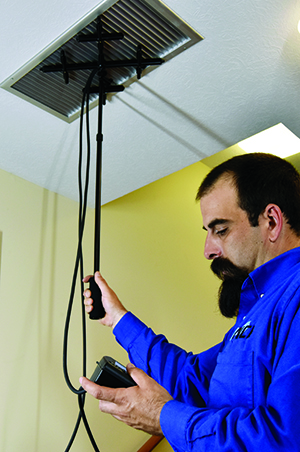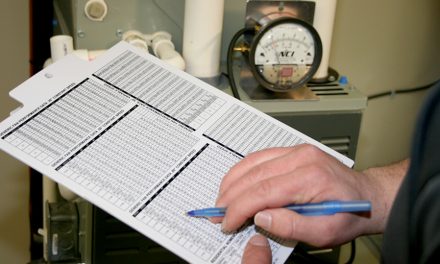With regard to UV technology, UV lights purify by attacking contaminants and microbes at their basic molecular level and then damage them enough so that they may no longer reproduce. However, this process is directly related to three essential factors: the intensity of the UV light spectrum, the amount of time the organism is exposed, and the distance the light is to the organism.
This technology works very well on wet surfaces, such as a coil or pan. But even though there have been advances in UVC technology, they don’t work well in an airstream. So, mandating duct cleaning, or ducts with UV technology, without clear performance results would be overkill.

Prescriptive Mandates Achieve Little
Mandates and directives are often prescriptive. For instance, in 2005, the California Energy Commission introduced their prescriptive mandates that included: duct leakage, fan watt draw, and refrigerant charge requirements. Each system had to meet a certain standard.
The energy savings were minimal after the state spent millions of dollars on incentive programs and completed thousands of houses. So, you can imagine that trying to put a prescriptive mandate on IAQ would be next to impossible.
Whether the HVAC industry could handle the issue of IAQ by themselves, without mandates, depends largely on the working knowledge and education of the contractors. IAQ is often a team approach. It is also multi-discipline. A contractor may need to team up with a certified industrial hygienist, a mold remediation company, an asbestos abatement company, an air-sealing and insulation company, or a building science professional.
By taking on IAQ investigative processes, we can not only serve our customers better, but we can also avoid the mandated solution mistakes of the past.
John Ellis not only owns Dynamic Air Consulting, but he also teaches a NATE-approved course on Indoor Air Quality Principles through Daikin/Amana/Goodman. You can find this course at ncilink.com/AQP. He is also a business coach and field service trainer for The New Flat Rate. In addition, John is an author (ncilink.com/IAQ-SP) and speaker. Email John at ncilink.com/ContactMe.













I worked for a building science company that really tried to get into IAQ. We even implemented an asthma study in single family homes that upgraded airflow, improved filtration, vented out stoves and bathrooms, provided guidance on cleaning practices, and measured everything. At the end of the study, the conclusive data we had was that gas ranges can’t actually be vented well enough to eliminate NOX emissions in the home.
Now I work for an HVAC company that is planning to work on making homes healthier. The challenge is that if you sell a gadget like a UV bulb or air ionizer that claims to clean the air and costs a few hundred dollars you will sell them whether or not they actually make IAQ better. A real solution may involve thousands of dollars in duct renovations, or a package of solutions that revolve around decluttering, better cleaning practices, getting rid of fragrance oil products that the customer loves, allergen resistant mattress covers, and replacing the brand new gas stove on that kitchen island with induction because no exhaust venting solution can actually take care of the problem.
What does an IAQ-focused business model look like when the biggest opportunity to make a house better is controlling pollutant sources? My favorite part of what I do for energy efficiency is when I have a solution to the customer’s problem that I get to implement. But sometimes there is an answer that they don’t like and not always because of the cost. People don’t usually want to get rid of the garage fridge from 1995.
In terms of IAQ they just remodeled that kitchen or bought a new house, the stove is functionally where they want it, and kitchen range hoods are loud.
Then there is the business challenge: I’d love to sell the customer a whole-house HVAC solution to their dust mite allergy problems, but what they really need isto replace their pillows and get a mattress cover. I’m not even confident that integrating higher levels of filtration or fresh air ventilation into heating and cooling ducts is actually a good idea because IAQ has different requirements than HVAC and running the fan more often can interfere with controlling humidity.
Great article, John! State mandates remind me of something you say quite regularly regarding IAQ solutions. Prescription without diagnosis is Malpractice.